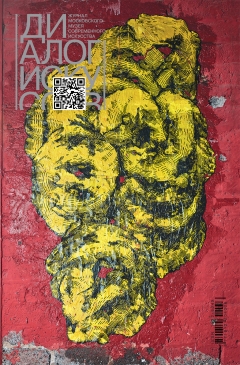The contemporary Russian version of democracy forms the backdrop for the selection of works for a solo exhibition of Alexander Kosolapov – the first to take place in Moscow since the artist left the USSR for the USA 40 years ago.
Nina Bereznitskaya. Now that the exhibition is almost upon us, tell us, what of the unexpected should we expect and what of the expected will be left out?
Alexander Kosolapov. Works dedicated to the subjects that I am usually drawn to, for example those religion-themed, are impossible to exhibit here. While preparing the show I grew to respect the works that I previously considered incomplete. These will be shown. Since this is a retrospective, archival materials will also be presented, for example a film about the “Kazimir Passion” group and also several installations produced in the early 1990s such as “Gagarin Show” and “Bulldozer Exhibition”.
NB. In your view, what is the main curse of contemporaneity?
Ak. The core of the matter is the gap between different outlooks on the world. Due to globalisation the relations between countries have become less predicated on the principles of democracy. Countries and communities are opting for self-isolation; nationalism is gaining ground. The conceptual premises of the modernist society are discarded and religions are undeniably at the forefront of this process.
NB. Despite numerous projects celebrating the centenary of the revolution being held in Moscow this year, there seems to be no rethinking of these historical events. At the same time we witness efforts to rewrite history including the destruction of monuments across the territory of the former Soviet Union. What is your attitude to this?
AK. In Moscow in 1990 there was an exhibition where the participating artists were asked to reflect on what is to be done with political monuments. Since no official apology for communism appeared after its retirement, I came up with an idea of travestying them by putting latex masks of cartoon characters on them. Similarly to religious art, each such monument is a propagandist political sculpture. Making a travesty of them could play down their grandeur and serve as an act of reconciliation. However it is only possible in a democratic society. It is a pity that most such projects are left unrealized.
DI #5-2017




